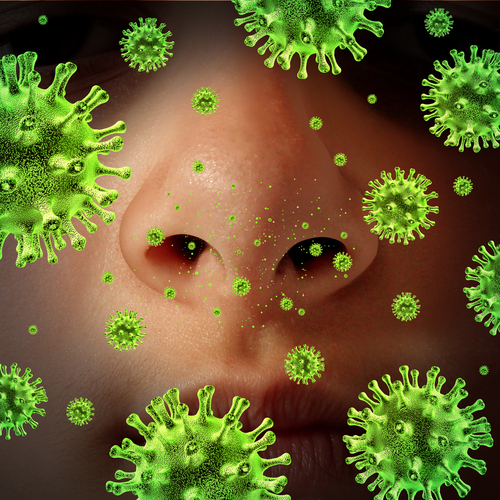On the one hand, you really need people to show up for work. On the other hand, if people show up for work when they’re sniffling, sneezing, coughing, feverish, and miserable, how much work are they really getting done? And how many of their coworkers will call in sick the following week, because of their exposure to the first one who should have stayed home—and didn’t?

Here’s some guidance for your workers on how to keep from spreading their illnesses all around the workplace.
Get Vaccinated
Many infectious diseases can be prevented by vaccinations—including the common annual bout of influenza. The CDC now issues vaccination recommendations for adults that include booster shots for illnesses workers may have been vaccinated against as children, and for other diseases based on age, health status, and other factors.
Every year, though, everyone who’s not allergic or immunocompromised should get a flu shot. Including pregnant women.
Join us for a live webinar coming Tuesday, November 25, 2014 to learn about Winning Strategies for Engaging Employees in Your Programs. Click here to join now!
Stay Home
Workers who develop a fever should stay home. Adults are less likely to be feverish than children, though, so how do they make the call? If you’re in the first few days of a cold, you’re highly contagious and need to stay home. Vomiting and diarrhea are also important signs that you have something contagious and should stay home. Develop a comprehensive illness policy that requires workers to take medical leave for at least the first few days of an illness, until symptoms subside.
Cover Your Cough
Because so many diseases—most notably, the flu—can be spread by airborne droplets before symptoms appear, it’s important for adults to observe basic hygiene at all times. When they’re coughing or sneezing, this means don’t cough or sneeze right into the air. If you have a tissue or handkerchief, use that; if you don’t, then cough into your elbow (not your hand!). Cover that cough or sneeze!
And then do this next thing:
Designing your safety program for active employee involvement requires you to develop an “engaging” strategy and training program. But, too often safety training programs are crafted in a way that actually achieves “disengagement.” Join us for this live webinar to learn how design winning strategies for engaging employees in your programs! Click here for more information!
Wash Your Hands
Handwashing is one of the most effective ways to prevent the spread of disease. The CDC recommends the following technique:
- Wet hands with clean, running water (warm or cold), turn off the tap, and apply soap.
- Lather hands by rubbing them together with the soap. Be sure to lather the backs of hands, between fingers, and under nails.
- Scrub hands for at least 20 seconds.
- Rinse hands well under clean, running water.
- Dry hands using a clean towel or air dry them.
If soap and water are not available, alcohol-based hand sanitizers are also effective.
Disinfect
Because infectious agents can survive on surfaces, it’s important to regularly disinfect frequently touched surfaces, especially during cold and flu season. Light switches, door knobs, desk and counter tops, drawer pulls, phones, and keyboards are commonly contaminated surfaces that should be swabbed down with a disinfecting wipe at least once a day.
There are lots of things you don’t want spreading through your workplace—infectious diseases, carelessness, disregard for safety. Get a handle on all of them with the resources at Safety.BLR.com.
